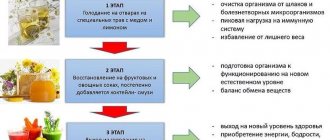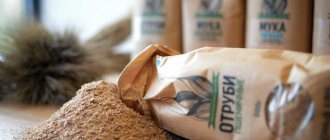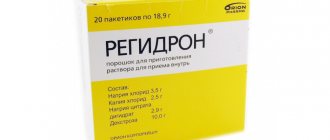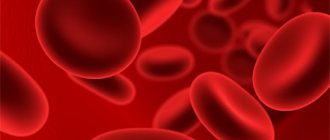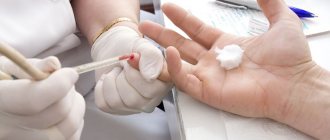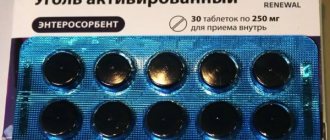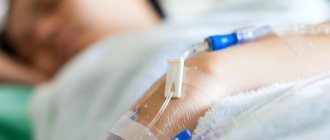A dropper for blood purification is one of the treatment methods, which is called infusion-drip therapy. In medicine, it is widely used to relieve intoxication. With the help of a dropper, various solutions are supplied to the blood, which saturate the organs with oxygen and enable them to function normally. The presence of harmful substances in the blood can be dangerous not only to health, but also to human life. Sometimes, to help him, methods other than cleansing the blood with a dropper turn out to be ineffective.
How is the procedure carried out?
Placement of IVs to cleanse the body usually occurs in the following order:
- Anamnesis collection. Before the body cleansing procedure, the health worker interviews the patient, gets acquainted with his medical history, identifying contraindications.
- Hygienic and antiseptic procedures. This includes thorough hand washing and treating the skin with alcohol, chlorhexidine or other disinfectants before the detoxification procedure.
- Preparing the system. To install an IV, our employees use only factory-made products without any signs of damage on the packaging.
- Fixing a bottle of medicine on a tripod. Installation of droppers involves mounting them at a height of more than one and a half meters from the floor.
- Inserting a needle into a vein. A kind of indicator of the correctness of the manipulation is the appearance of blood in the tube.
Our employees have received specialized education, which is confirmed by relevant diplomas; they fully possess the necessary knowledge, skills, and practical experience. They are optimally suited for installing an IV, designed to restore health and strength to your body, ridding it of toxins.
We recommend reading: Idiopathic urticaria: 6 photos, symptoms, treatment, causes
Price
The final price of a detox drip at home depends on the patient’s distance from the center of the capital, the complexity of the procedure and the time of day
Departure is paid separately - 300 rubles
Call any time of the day:
Scientists have long proven that the accumulation of toxins in the body is one of the main causes of poor health, dysfunction, and disease. The lifestyle of contemporaries involves eating semi-finished products containing large amounts of synthetic additives, poor-quality water, and lack of sufficient physical activity, which leads to the accumulation of toxins.
One of the simplest, most effective, affordable, safe ways to get rid of them is droppers for cleansing of toxins and toxins. We install them at home, which makes the procedure not only beneficial for the whole body, but also comfortable.
Indications and contraindications for use
Blood delivers nutrients and oxygen to the internal organs. This ensures the coherence of the entire body. Any contamination of a vital fluid can cause poisoning. And some toxins can even cause death.
To cleanse the blood of harmful substances, the patient is prescribed IVs. The main indications for prescribing infusion therapy include:
Contraindications to infusion therapy:
- acute and chronic heart failure;
- signs of pulmonary edema;
- renal dysfunction;
- individual intolerance to infusion drugs.
In these cases, other methods are prescribed to cleanse the body of waste and toxins.
Medicines that can be used
Popular medications for intravenous administration for alcohol poisoning:
- “Magnesia” - helps restore the level of magnesium and potassium in the body, which are important for the functioning of the cardiac system;
- "Polyglyukin" - normalizes the passage of red blood cells and the composition of plasma;
- Ringer's solution;
- "Reambin" - removes toxic substances from the blood;
- ascorbic acid – helps cleanse the blood of toxins, strengthens the walls of blood vessels and capillaries;
- nicotinic acid – reduces cholesterol levels in the blood.
The decision on how to clean the blood with a dropper and what drugs to use should be made by the doctor.
In what cases is cleaning with droppers recommended?
The circulatory system delivers vitamins, oxygen and nutrients to the internal organs of a person. For systems and organs to function properly, the blood must be clean. But medications, alcohol, and pathogenic microbes affect the composition and make it dangerous. The body cannot cope with toxins on its own; the blood is cleansed with special droppers.
When cleaning is indicated:
- pathology of the immune system – starts a process of self-destruction that is difficult to stop;
- elevated cholesterol levels are dangerous for the development of cardiovascular diseases, stroke and heart attack;
- intoxication - poisoning with poisons, alcohol, drugs, threatening severe complications and death;
- hyperuricemia (high levels of uric acid) – threatens joint problems.
Detoxification drugs
Popular drugs for detoxifying the body, which are administered intravenously:
- Hemodez N;
- Reamberin;
- Rheosorbilact;
- Neocompensan;
- Reopoliglyukin;
- Gelatinol.
Action of drugs:
- detoxification (removal of toxins, cleansing of the body);
- antioxidant (reducing the degree of oxidation of lipids and proteins);
- improvement of rheological properties of blood (dilution) and microcirculation;
- antihypoxic effect (saturation of blood with oxygen and improvement of metabolic processes).
Features of using droppers
In medicine, there are many ways to remove harmful substances from the bloodstream. The following procedures are effective:
- Plasmaphoresis. Main indications: hepatitis, lupus erythematosus, toxicosis, psoriasis, diabetes, etc. The essence of the technique is that blood is taken from a vein, from which the cell mass is isolated, diluted with saline and injected into the circulatory system.
- Hemosorption. The patient's blood is passed through a special filter and injected back into the blood.
When is it necessary to cleanse the blood of toxins?
IV
Blood performs a vital function, bringing oxygen and important substances to the organs. Under the influence of negative factors, the blood composition changes. Diseases, consumption of large amounts of medications, poor nutrition, bad habits and toxic substances cause the blood to become viscous. This negatively affects well-being and reduces immunity. Often, blood purification using systems is used for excessive use of alcohol or drugs.
Blood purification with the use of drugs is a popular medical method of healing, indicated for the following conditions:
- High cholesterol is a dangerous condition that cannot remain uncontrolled. High cholesterol levels cause atherosclerosis with all the negative consequences for health.
- Immune pathologies - with such changes, the human body is configured for self-destruction. A serious condition requires close medical monitoring.
- High levels of uric acid in the blood. Over time, this leads to gout.
- Intoxication is a dangerous condition that requires immediate treatment. If the course is severe, there is a risk of death or the development of severe pathologies.
It is important to understand that droppers for cleansing the body can only be prescribed by a specialist. It is impossible to cleanse the bloodstream with their help too often, since the body can stop fighting negative conditions on its own. This treatment option cannot be a preventive method.
The doctor's consultation
Gestation period
When carrying a child, serious changes occur in a woman’s body. A number of them are necessary for the full formation of the fetus. However, some changes negatively affect the condition of both the mother and the unborn child. One of them is thick blood during pregnancy.
An increase in hematocrit in women occurs for the following reasons:
- individual physiological characteristics;
- reduction in water supply;
- insufficient consumption of vitamins and minerals, which are used in large quantities for the formation of the fetus;
- lack of enzymes;
- taking iron-containing medications prescribed against the background of low hemoglobin;
- active consumption of foods rich in protein compounds and carbohydrates;
- active work of the spleen.
In addition, thick blood during pregnancy occurs due to a number of pathologies:
- large blood loss;
- increased coagulability, which quite often leads to miscarriages;
- pathologies of the kidneys, liver and intestines;
- strong pain.
Often, the hematocrit in pregnant women increases for a short period of time under the influence of a separate factor. But when they are combined, the woman’s condition worsens sharply.
It is important to understand that thick blood in pregnant women is the body’s protective reaction against blood loss during childbirth. That is, during pregnancy, all women’s hematocrit temporarily increases. We can talk about the seriousness of this problem only if the concentration of plasma and formed elements significantly exceeds the permissible norm.
The composition of droppers and the principle of their operation
The most popular means for infusion blood purification are:
- Reopoliglyukin;
- Rheosorbilact;
- Isotonic sodium chloride solution;
- Hemodez;
- Reambirin.
The drugs contain substances that have a detoxifying, diuritic, antihypoxic effect, and are also involved in blood thinning.
Thinning composition
For this purpose, solutions of glucose and sodium chloride are used. To enhance the effect, B vitamins (pyridoxine and cyanocobalamin) are added to them. Such droppers help not only cleanse the blood of toxins, but also prevent the formation of blood clots and normalize the level of homocysteine (an amino acid in the blood plasma containing sulfur). Both of these pathological factors increase the risk of developing heart failure.
Droppers increase the volume of circulating blood, thinning it. In turn, an additional load is created on the kidneys and diuresis increases. This allows toxins to be flushed out of the body. In some cases, it is necessary to enhance the diuretic effect. The patient undergoes a forced diuresis procedure. To do this, furosemide is added to the infusion solutions.
To protect and restore the liver
When the body is intoxicated, the main blow falls on the liver cells. Sometimes toxic substances can cause irreversible processes in this organ. Therefore, it is important to carry out hepatoprotective therapy as soon as possible.
To do this, the patient is injected intravenously with drugs that protect and restore liver cells. The most common drugs are Essentiale, Glutargin and Heptral. The contents of one of the ampoules are dissolved in 200 ml of 0.9% sodium chloride and administered intravenously.
Vitamin products
In case of alcohol poisoning, the patient is given droppers based on a 5% solution of glucose, vitamin C and nicotinic acid. The product accelerates the breakdown of ethanol, takes part in the removal of acetaldehyde and reduces the risk of liver cell destruction.
To correct electrolytic dysfunction
Acute poisoning is often accompanied by uncontrollable vomiting. This causes dehydration of the body. As a result, heart problems occur.
The situation is aggravated by the prescription of drugs for forced diuresis. Potassium and magnesium are excreted from the body along with urine. If electrolyte balance is not corrected, the risk of developing heart failure increases.
To avoid this, you need to administer the drug Acessol to the patient. It contains potassium and magnesium salts dissolved in 0.9% sodium chloride. This medication can be replaced with a dropper based on a glucose solution with Panangin or Asparkam.
Many doctors have already stopped prescribing drugs to patients that wash away potassium from the body. To increase diuresis, diuretics are used that preserve electrolytes in the blood, such as spironolactone.
Droppers to restore acid-base balance
An overdose of certain medications or alcohol poisoning can cause a violation of the pH of the internal environment of the body. In the absence of pathologies, it is slightly alkaline. Intoxication can shift the pH to the acidic side. Acidosis develops. The body becomes more vulnerable to fungal, viral and bacterial infections.
In order to restore the acid-base balance, the patient is prescribed intravenous administration of the drug Soda Buffer. The product alkalizes the body fluid, eliminating acidosis.
To restore blood circulation in the vessels of the brain
Poor cerebral circulation causes frequent headaches, fainting, and memory impairment. A serious complication of this pathological condition is a stroke.
You can restore blood circulation to the brain with the help of nootropic drugs and cell membrane stabilizers. These medications are available in ampoules. They are added to a sodium chloride solution and administered intravenously.
The most commonly used drugs are:
- Lutsetam;
- Cavinton;
- Actovegin;
- Cerebrolysin;
- Neurotropin;
- Thiotriazolin.
For cleansing of toxic substances
To reduce the negative impact of toxins on the body, the patient is administered ready-made infusion solutions. They already contain substances necessary to relieve the symptoms of poisoning. No additional administration of auxiliary drugs is required. Such drugs include Reopoliglyukin, Reosorbilakt, Sorbilakt.
For energy and tone of the body and normalization of blood glucose levels
Glucose solution is used as an energy source for poisoning. Thanks to the use of this drug, it is possible to normalize metabolic processes in cells. Droppers for blood purification with a 5% glucose solution help the body recover faster from the negative effects of toxins. The drug is administered intravenously in pure form or with the addition of 2.0 ml of ascorbic acid.
Contraindications
Before deciding to use one or another drug, it is necessary to consult with your doctor, since each drug has significant contraindications.
Among the most common of them are:
- predisposition to bleeding;
- cerebral hemorrhages;
- acute forms of ulcers or erosions in the gastrointestinal tract;
- severe renal failure;
- period of bearing a child (1st and 3rd trimesters);
- lactation;
- allergic reactions;
- nasal polyposis;
- gout;
- individual intolerance to acetylsalicylic acid;
- age less than 18 years.
It is not recommended to choose medications that thin your blood on your own. Given the multiple limitations, consultation with a specialist is necessary. Only a doctor will be able to correctly select the remedy and prescribe the required dosage.
Drug therapy
Treatment of thick blood involves taking measures aimed at both thinning it and suppressing the cause. To achieve these goals, the following are appointed:
- procedures to restore metabolism;
- drugs that prevent the formation of blood clots;
- measures to eliminate tumor formations.
The following drugs play an active role in eliminating the problem under consideration:
- Aspirin, Cardiomagnyl, Dipyridamole and Tirofiban. They help thin the blood and normalize blood flow. These drugs are not prescribed for the following pathologies:
- ulcers of the stomach and duodenum;
- bronchial asthma;
- liver dysfunction;
- hypertension;
- presence of allergies to drug components;
- pregnancy.
- If these pathologies are detected, these drugs are replaced with others: Neodicoumarin, Warfarin, Heparin.
It is important to note that the simultaneous use of drugs of the first and second groups is prohibited. Treatment of thick blood is carried out under the control of a coagulogram.
Therapy of the pathological process also includes measures and drugs designed to eliminate the underlying disease. Therefore, the treatment regimen is determined depending on the patient’s individual indicators.
Side effects
Since most medications contain potent substances, patients often experience the development of side effects:
- disruption of the digestive system;
- irritation of the gastrointestinal mucosa;
- ulcers when taking medications for a long time;
- gastrointestinal bleeding;
- rash on the skin;
- weakness;
- bowel dysfunction (diarrhea).
To prevent this, you must strictly adhere to the doctor’s instructions, and you must not increase or decrease the dosage of the medicine yourself.
Clinical picture
The problem under consideration does not have specific symptoms. That is, the symptoms of thick blood are not classified as a separate group. The following signs may indicate the occurrence of an increased hematocrit:
- strong thirst;
- drying of mucous membranes and skin;
- the appearance of shortness of breath;
- low exercise tolerance, muscle weakness;
- active heartbeat for no obvious reason;
- the appearance of unpleasant sensations localized behind the chest;
- heaviness in the head;
- feeling of chills in the extremities.
A child with thick blood becomes more whiny and drowsy.
Prevention of complications
To maintain normal blood viscosity and prevent negative consequences, it is necessary to control the drinking regime and the quality of nutrition.
It is also important to adhere to some simple rules of prevention:
- reduce the amount of food high in cholesterol and sugar in your diet;
- eat more seafood;
- give up alcoholic drinks and smoking;
- devote more time to relaxation and walks in the fresh air;
- exercise;
- do not expose the body to stressful situations.
Blood thinners are highly effective medications. Thanks to their effects, the chance to prevent the development of many serious diseases increases.
Normalization of nutrition
In order to thin the blood, it is recommended that pregnant women and other patients review their daily diet. A diet for the problem under consideration involves giving up certain foods. What is not allowed is determined by the attending physician based on the patient’s individual indicators.
Dietary nutrition includes the following conditions:
- Active consumption of liquids. Every day the patient needs to drink up to 1.5–2 liters of liquid. It is recommended to opt for clean, still water. The liquid itself must be consumed throughout the day.
- Reduce your salt intake. It prevents the removal of fluid from the body, which causes the formation of edema.
- There are more products with ascorbic acid. It promotes rapid blood thinning. Ascorbic acid can be found in berries, fruits (grapefruit, lime, lemon), red and orange vegetables.
- Add a variety of spices to your diet. It is recommended to use as a seasoning for dishes:
- turmeric;
- oregano;
- dill;
- ginger;
- thyme.
- Use rapeseed, olive and linseed oils.
During treatment you must avoid:
- milk and dairy products;
- meat products and preservation;
- egg yolk;
- chocolate, coffee and foods high in sugar;
- bakery products.
To supplement the diet, adjustments to daily physical activity towards their reduction are intended. However, you cannot completely abandon them .
Cleaning with a dropper for allergies
About half of the world's population suffers from an allergic reaction to one or another irritant. Some immune system disorders are so severe that patients are forced to leave the city before the flowering season, go to the hospital and receive a whole course of therapy with glucocorticoids and antihistamines.
For early treatment of complications, the drip method of drug administration is suitable. Patients are given:
- Prednisolone;
- 10% glucose;
- histamine blockers;
- adrenalin;
- sodium chloride, calcium;
- saline solution
It is worth emphasizing that the procedure is not prescribed for everyone. Common allergic rhinitis and mild bronchial asthma are treated with aerosols, sprays and inhalers.
Dropper for blood cleansing and thinning
Many diseases that contribute to bleeding disorders are treated with blood thinning IVs. A thinning drip to cleanse the blood of toxins helps remove harmful substances through excretion through the urinary system and eliminates dehydration. Most often, along with these droppers, doctors prescribe saline solutions, for example, Disol.
What results are expected from this procedure:
- replenishment of energy reserves;
- removal of harmful poisons;
- acceleration of metabolism.
Cleansing the blood of toxins with blood thinning drips has the following absolute contraindications:
- thrombophlebitis;
- heart failure;
- problems with the composition of ions in the blood;
- chills, increased body temperature;
- surges in blood pressure.
Before resorting to any blood purification system, it is necessary to be examined and determine the presence or absence of contraindications.
First of all, people who are allergic to the drugs used during the procedure are prohibited from cleaning blood with droppers. Such manipulation can achieve not a positive effect, but anaphylactic shock, Quincke's edema, which without emergency medical care ends in death.
Other contraindications include:
- overhydration;
- swelling of tissues;
- cardiac, renal and liver failure in the stage of decompensation;
- varicose veins, thrombophlebitis in the injection area;
- inflammation of the veins
Other diseases are considered individually, taking into account the instructions included with the infusion solution. Many substances cannot be used during pregnancy, lactation, or for elderly people or children.
Practitioner. She graduated with honors from Vitebsk State Medical University in 2012 with a degree in general medicine. She was awarded a certificate of honor for her achievements in her work.
Who should use it?
It is necessary to take measures to thin the blood only on the basis of appropriate test results or if characteristic symptoms appear. As a rule, depending on the type of laboratory test, indicators may vary.
If the hematocrit value is more than 0.55, the body is in serious danger. When conducting a general blood test for bleeding disorders, an increase in the concentration of red blood cells to 6 or more per liter will be visible. If, when analyzing viscosity, the value of the indicator is higher than four, then we can talk about a threat.
Excessive thickness of the blood fluid will be indicated by corresponding symptoms. These include:
- feeling of dryness in the mouth;
- absent-mindedness;
- increased blood pressure;
- weakness;
- heaviness and coldness in the lower extremities;
- headache.
In addition, one of the main symptoms is tingling and numbness in some areas of the body. When the blood thickens, the patient will experience a constant state of depression.
Ways to identify the problem
Before considering how to thin thick blood, you should look at ways to identify this problem. For these purposes, the following activities are carried out:
- general blood analysis;
- coagulogram, mandatory for pregnant women in case of detection of a pathological condition;
- biochemical analysis;
- glucose tolerance test;
- Analysis of urine.
All studies are carried out to determine the level of content of formed elements and their deviation from normal values.
After 40-50 years
After the age of 40, every person should undergo regular medical examination, even if he does not suffer from chronic pathologies. The body gradually weakens, which is much more dangerous with the development of any pathological process.
The drugs prescribed by specialists to thin the blood for patients over 50 years of age prevent the development of thrombosis, as well as heart and vascular diseases. At all times, aspirin was considered one of the best drugs.
In addition, other medications have recently become widely used. List of medications recommended for use in older age:
- Warfarin;
- Heparin;
- Exanta
- Aspirin-Cardio.
Also suitable for adults:
The listed remedies should be used in a course with a break. This will allow you to maintain normal blood fluid viscosity for a whole year.
The danger of thick blood
Most people do not attach importance to the fact that disruption of the flow of fluid into the body can provoke various negative consequences. Experts have identified several pathological processes that directly depend on blood viscosity:
- hypertension, characterized by a sustained increase in blood pressure;
- ischemic or hemorrhagic stroke;
- heart attack;
- disruption of the cardiovascular system;
- atherosclerosis;
- varicose veins;
- blood clot formation.
The development of each of these diseases can not only cause disability, but also result in death.
About the pathological condition
The decision about what to do with thick blood depends on the reasons that provoked this condition. It is important to understand that the problem under consideration is not a separate disease. It is a symptom that indicates the occurrence of a serious pathology in the human body.
Blood consists of two components:
- blood cells, or formed elements, on which the thickness of the liquid depends;
- plasma, which makes up the liquid part.
Normally, the density of the former is 1092–1095, the latter – 1024–1050. That is, the concentration of formed elements always exceeds the volume of plasma content. The latter consists of approximately 91% water and 9% dry matter. In addition to these cells, the blood contains various proteins and salts .
The ratio of the concentration of formed elements to plasma, known as the hematocrit number, differs between men and women. This is explained by the physiological characteristics of their organisms.
The thickness, or viscosity, of blood depends on the concentration of two components: fibrinogen and prothrombin. However, this figure may increase following an increase in the amount of cholesterol, glucose and other elements.
Effective products for people of any age
The most effective and frequently used blood thinning drugs include the following:
- Heparin. The same active component is present in the mucus of leeches, which enters the bloodstream during a bite.
- Dabigatran. It is a thrombin inhibitor. Helps achieve an active level of coagulation.
- Warfarin. It ranks second in popularity.
- Trental.
- Aspecard. Helps control blood clots.
- Rivaroxaban. Refers to highly selective inhibitors. Relatively new medicine.
- Aescusan. Helps normalize blood circulation in the veins and strengthens vascular walls.
- Fenilin. Has an effective effect within a short period of time. Since this remedy has many contraindications, it is used in exceptional cases.
- Magnesium hydroxide preparations (Cardiomagnyl). Control the thickening of blood fluid.
- Multivitamins. Helps restore vascular structure and prevent the formation of blood clots.
- Aspirin.
ethnoscience
Treatment with folk remedies also gives positive results. It is recommended to use such products only after consulting a doctor.
willow bark
- To prepare the medicine you will need a teaspoon of the plant and two glasses of boiling water. After mixing the ingredients, they must be placed on low heat and cooked for 20 minutes.
- After this, the composition should infuse for six hours.
- The finished medicine is taken one glass three times a day.
Ginger root
The plant must first be crushed, then mixed with a small amount of cinnamon and added to tea. The composition is taken no more than three times a day after meals.
Herbal collection
- To thin the blood, you need to mix black currant leaves, hawthorn and rose hip berries, and calendula flowers in equal proportions.
- After grinding, take four tablespoons of the prepared mixture and dilute with two glasses of boiling water. The composition is boiled for 20 minutes and infused for some time.
- The finished product is taken every time after meals.
The above treatment regimens can be supplemented with hirudotherapy. It is permissible to resort to this procedure only after consulting a doctor, as it has many contraindications.
To prevent the problem under consideration, you can use tips that relate to dietary nutrition. Also, in order to prevent the formation of thick blood, it is recommended to exercise regularly, lead an active lifestyle and give up bad habits.
Advantages and disadvantages of the method
Like any therapeutic method, IV drips have their advantages and disadvantages. The main advantage is that the drug enters the blood instantly and begins to act in the first minutes.
Intravenous medication eliminates problems with the digestive tract.
Flaws:
- hemorrhages and hematomas at the site of needle insertion;
- thrombophlebitis due to inflammation of the veins;
- necrosis from improper placement of the IV;
- allergy to medicine.
Droppers are an effective means of restoring health after severe alcohol poisoning, electrolyte imbalance and other problems. Every pharmacy sells medications that you can use on your own, but you shouldn’t do this. The procedure has its own peculiarities; self-medication can lead to a number of health complications, including the death of the patient. In the method, it is important to comply with every condition: the correct composition of the dropper for blood purification, instructions for the time of administration of the solution.
The article was approved by the editors
Rules and duration of the procedure
Only a specialist has the right to insert IVs. If there is a need for cleansing therapy at home, then you need to invite a certified medical professional.
Plasmophoresis
This is a method of detoxifying the body by separating contaminated plasma from blood cells. The procedure is carried out in a hospital setting using special devices. The plasma separation process occurs automatically. The patient is connected to the machine via an intravenous catheter.
Once the blood cells are separated, they are immediately returned to the systemic circulation as part of plasma replacement drugs. These include Ringer-Locke solution, Reopoliglucin, Neogemodez. Plasmapheresis is carried out to reduce the concentration of toxins, allergens, negative proteins, and hormones in the blood. The procedure lasts for 2 hours.
The process is not selective. Along with plasma, there is a loss of useful substances. Therefore, after plasmapheresis, the patient is prescribed replacement therapy.
Hemosorption
This is a hardware method of cleansing the blood of toxic substances. It is carried out in a hospital under the supervision of a doctor. Hemosorption helps cleanse the blood of toxins without losing nutrients.
The patient is connected to the device using two catheters inserted into different veins. From one, the blood enters a special reservoir, where the purification process takes place. It then returns to the systemic channel through the second vein. The process takes 2.5-3 hours.
Hemomorbtion, unlike plasmaphoresis, is selective. The procedure helps to cope with blood pollution, removing toxins, and all beneficial substances are returned in full to the bloodstream.
Infusion
The method consists of intravenous administration of medications in a volume of 100 to 500 ml. Infusion therapy can be carried out both in a hospital and at home. Acute poisoning requires the use of several medications simultaneously. Therefore, it is possible to switch the dropper from one solution to another within the same procedure. On average, the duration of the infusion ranges from 1.5-2.5 hours.
Possible harm from IVs
Despite the fact that cleansing drips are aimed at saving the patient’s life, at the same time they can cause harm to health. The most common complications are:
- phlebitis (inflammation of the venous walls);
- development of thrombosis;
- allergic reactions complicated by urticaria and Quincke's edema;
- necrosis of veins or adjacent tissues;
- hematomas.
Prevention of complications
The occurrence of undesirable reactions can be caused by a violation of the rules for installing a dropper, an incorrectly chosen infusion rate, incompatibility of administered drugs, or a poor-quality system for infusion of solutions.
In order to prevent complications, you need to carefully prepare for the procedure. Asepsis rules must be followed. If necessary, perform a drug tolerance test on the patient. If the patient has “unruly” veins, then it is better to look for a vessel in a place where it is clearly visible and a needle can be easily inserted into it.
Medical personnel must strictly monitor the rate and timing of infusion. If the instructions for the drug say that it must be dripped slowly, then jet administration should not be allowed. Violation of this rule can cause tissue necrosis and lead to the formation of blood clots.


